OVERALL WINNER
Nature’s Prey
Ashlee Jansen, Western Australia
Humpback whale (Megaptera novaeangliae), and Tiger shark (Galeocerdo cuvier)
Coral Bay, Western Australia
A humpback whale carcass found on the ocean floor, stripped clean of its flesh by surrounding sharks. This sub-adult whale died while making the annual migration north along the Ningaloo Reef. A harsh act of Mother Nature, but an important part of the natural ecosystem.
Sony A7R II, Canon EF 8–15mm f/4, 1/320, f/10, ISO 400, handheld, Nauticam underwater housing
Judges’ comments:
This captivating image of a dead whale speaks to the circle of life – one death supports the renewal of other ocean communities. The beauty of the image lies in its artful circular composition, seen in the curves of the whale’s skeletal ribs mirroring the patterns in the sand, keeping our eye within the frame moving between the living and the dead.
ANIMALS IN NATURE
Winner
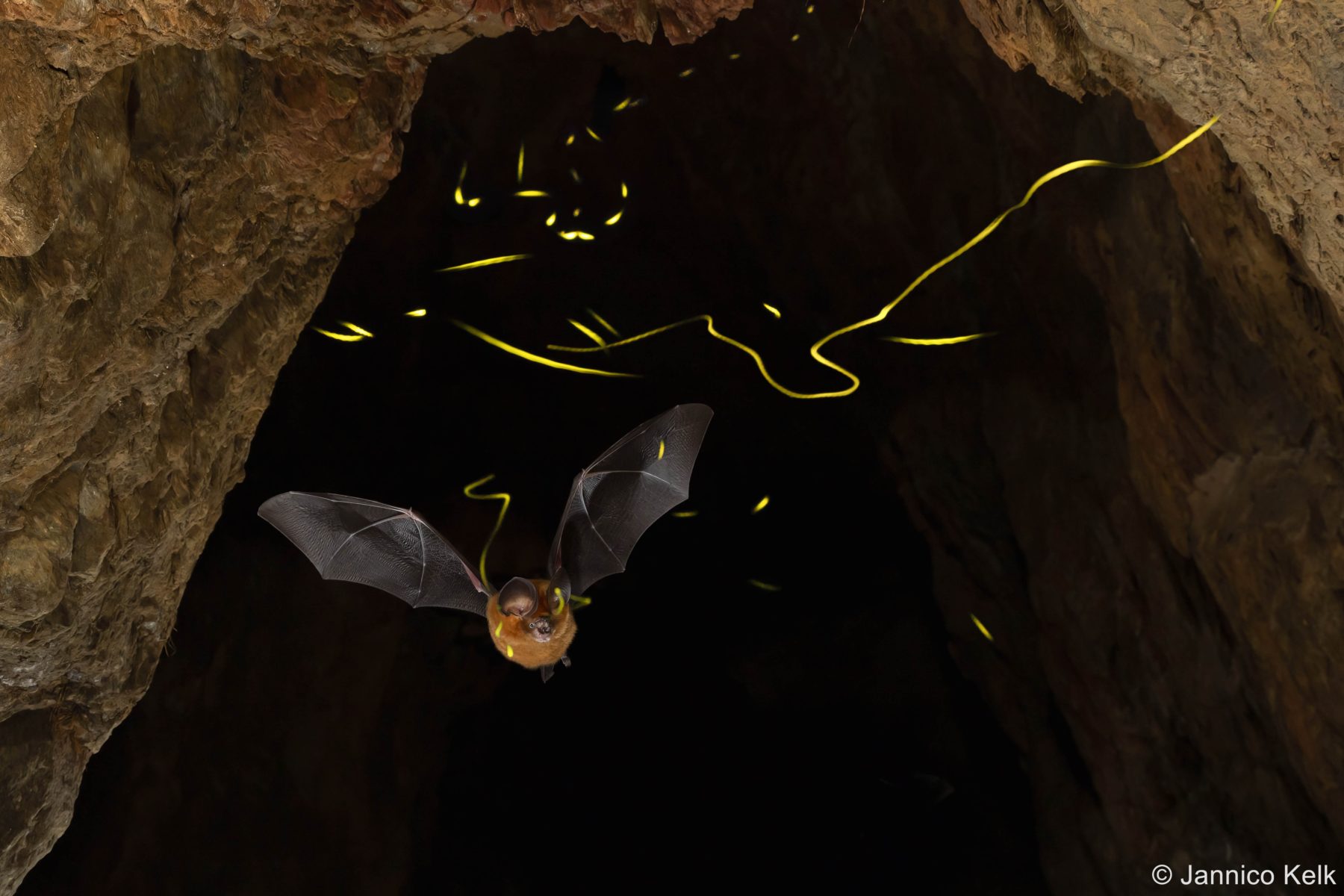
Night Light Dining
Jannico Kelk, Queensland
Dusky leaf-nosed bat (Hipposideros ater), and Firefly (Lampyridae)
Each spring, the Great Dividing Range is treated to a magical event. After sunset, bioluminescent fireflies emerge from the darkest corners of the forest for a short time. However, they’re not entirely safe. Insectivorous dusky leaf-nosed bats leaving their roost capture fireflies mid-flight, displaying a stunning acrobatic aerial battle.
Ella Bay National Park, Queensland
Canon 7D, Tamron 24–70mm, 3.27 x 7, f/11, ISO 400, 5 x Yougnuo YN-560IV, Zoomei Q666C tripod, Cognisys Range IR high speed motion sensor, seven images compiled from the same location and time
Judges’ comments: A dynamic moment captured using a considered combination of flash and slow shutter. The photographer has cleverly captured moving wildlife travelling at different speeds.
Runner-up
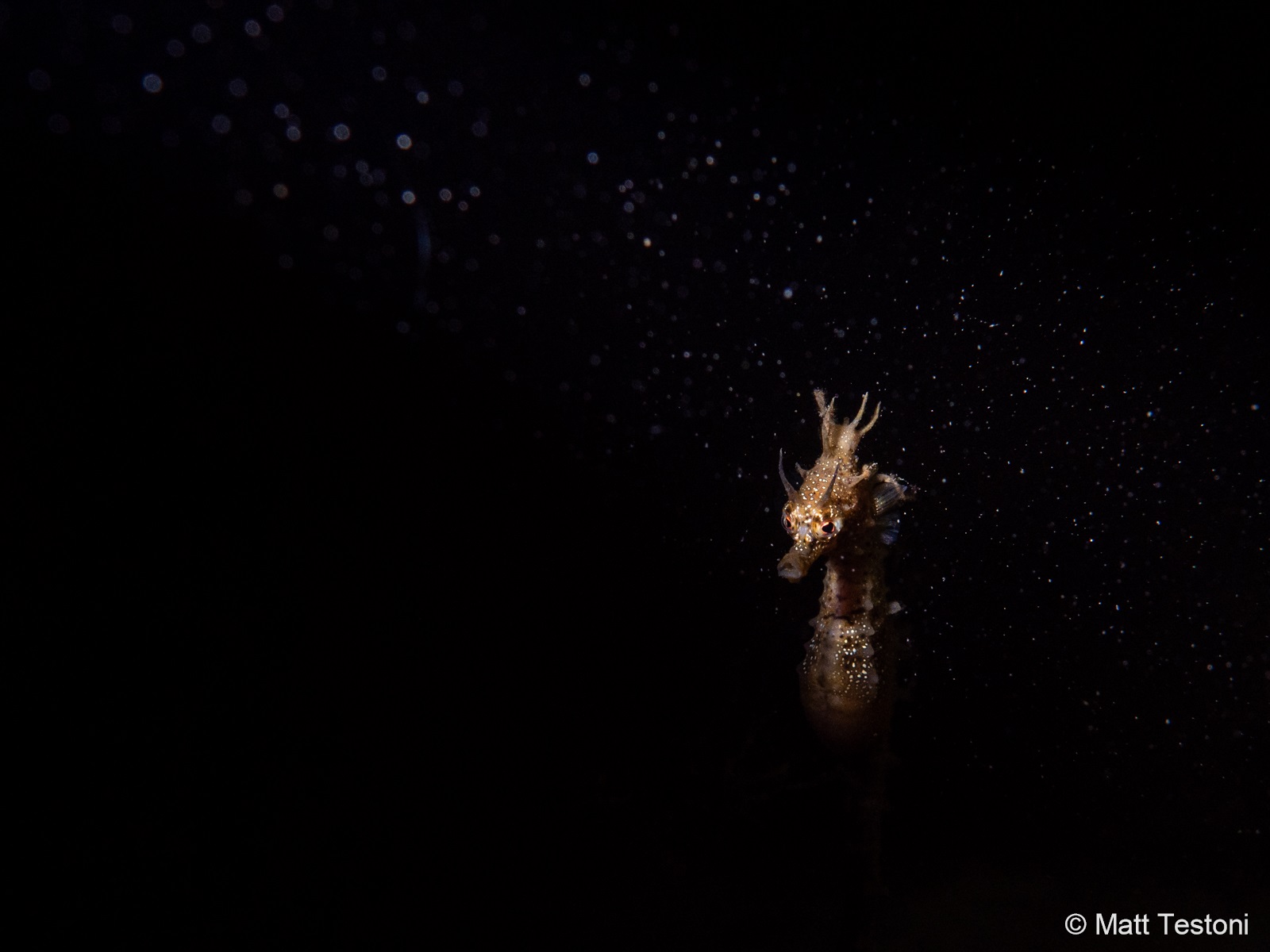
Midnight Seahorse
Knobby seahorse (Hippocampus breviceps)
Matt Testoni, Tasmania
A knobby seahorse hunts its prey in the cold night-time waters off Kettering, Tasmania. Sitting still amongst the seagrass, they become almost invisible to the untrained eye. It’s an amazing experience seeing these tiny seahorses hunt their crustacean prey late at night.
Kettering, Tasmania
Olympus OMD EM1 Mk II, Olympus 30mm macro, 1/100, f/7.1, ISO 200, handheld, external Sea&Sea YS-D2 strobe (flash) with Retra Snoot attachment, Isotta underwater housing
Judges’ comments: Rather than celebrating its unique shape through a profile capture, the photographer has chosen to shoot the seahorse as if sitting for a portrait. It appears to be suspended in space with a constellation of backscatter. Continuous lighting rather than a strobe has been used to great effect.
ASTROPHOTOGRAPHY
Winner
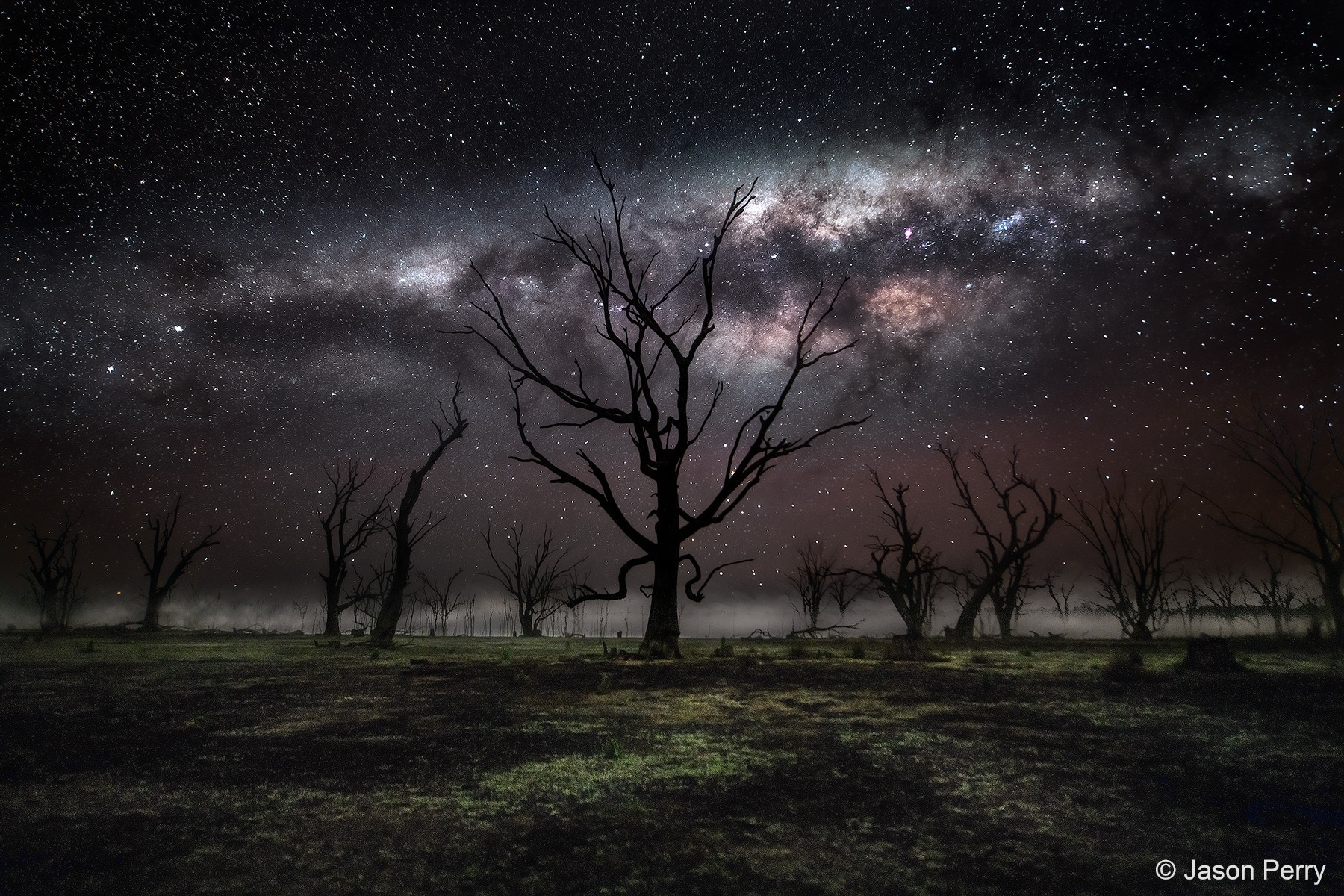
The Outlier
Jason Perry, Victoria
A beautiful dead tree stands above the rest as the fog lingers over Lake Toolondo and the Milky Way lines up horizontally across the night sky. When I saw this scene that night, it was as if the tree and the Milky Way were somehow connected despite the distance.
Toolondo Reservoir, Toolondo, Victoria
Nikon D850, Nikkor 14–24mm 20mm, 20, f/2.8, ISO 8000, tripod, 15 images stacked for noise reduction
Judges’ comments: This is a beautifully layered image with a gentle tonal palette. The trees provide drama without detracting from the night sky. There is a moody depth to the image, the Milky Way silhouetting the trees while also appearing to illuminate the foreground.
Runner-up
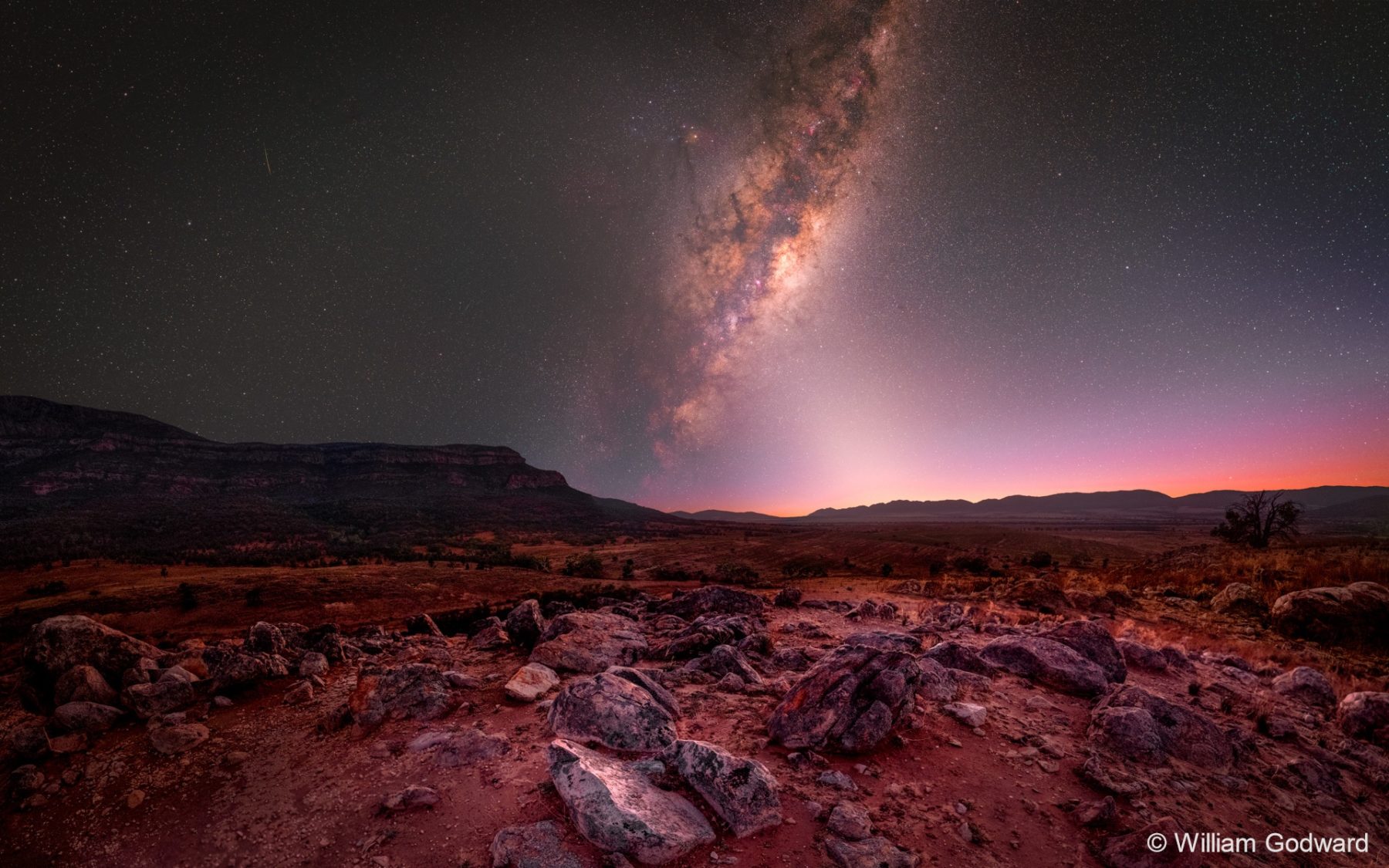
Flinders Rise
William Godward, South Australia
One of the most amazing things to see in the Australian outback is the colours across the landscape at sunset and sunrise. I love how the Milky Way is perfectly positioned here with the silhouette of the ridge line. I started shooting the image just before astronomical twilight, and finished on the foreground just before blue hour.
Wilpena Pound, Flinders Ranges, South Australia
Sony A7 III, Sony 24mm 1.8GM, 30–60, f/2.0–f/2.8, ISO 6400, tripod, 25 x image horizontal panorama, tracked using a Skywatcher Star Adventurer
Judges’ comments: This is an otherworldly image, the red landscape conjuring thoughts of another planet. The Milky Way leads the eye from the sky and draws us to the rock in the foreground, connecting the galactic ballet with the sturdiness of the land.
BOTANICAL
Winner
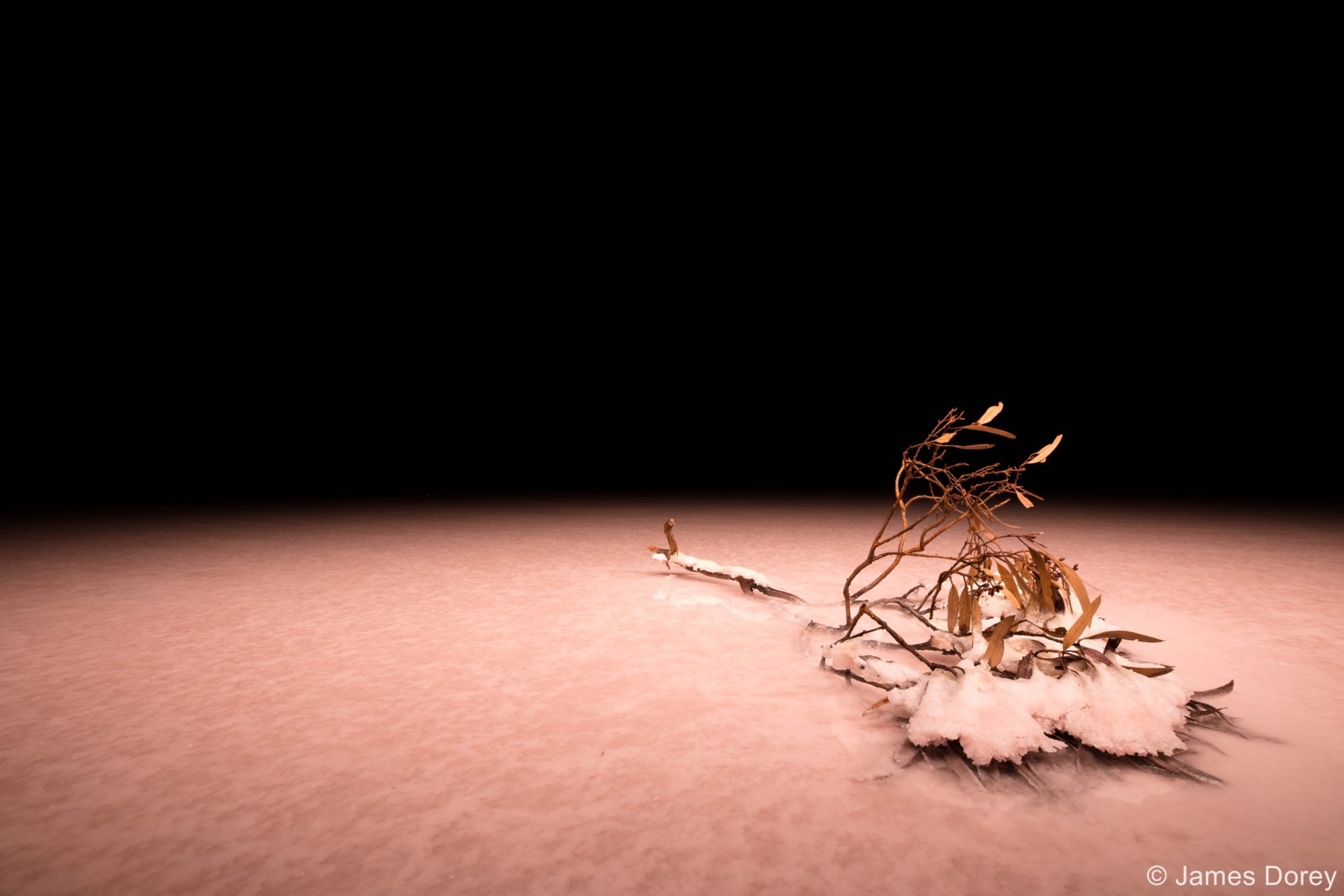
A Pink Tomb
James Dorey, South Australia
Darkness rolls over Lake Crosby adding an eerie element to the smooth pink salt. All that falls on the lake is slowly preserved as the wind-driven tide ebbs and flows, leaving a little more salt every time. Objects mar the lake’s alien texture and the lake mars them in return.
Lake Crosbie, Victoria
Canon EOS 5D Mk IV, EF 16–35mm f/2.8L III USM, 30, f/11.0, ISO 100, remote LED light, tripod, manual mode
Judges’ comments: The photographer has cleverly elevated the seeming insignificance of a fallen branch to a revered botanical subject in this ethereal image. The mysterious scene has been enhanced by the salt’s pink hue being captured in such delicate light.
Runner-up
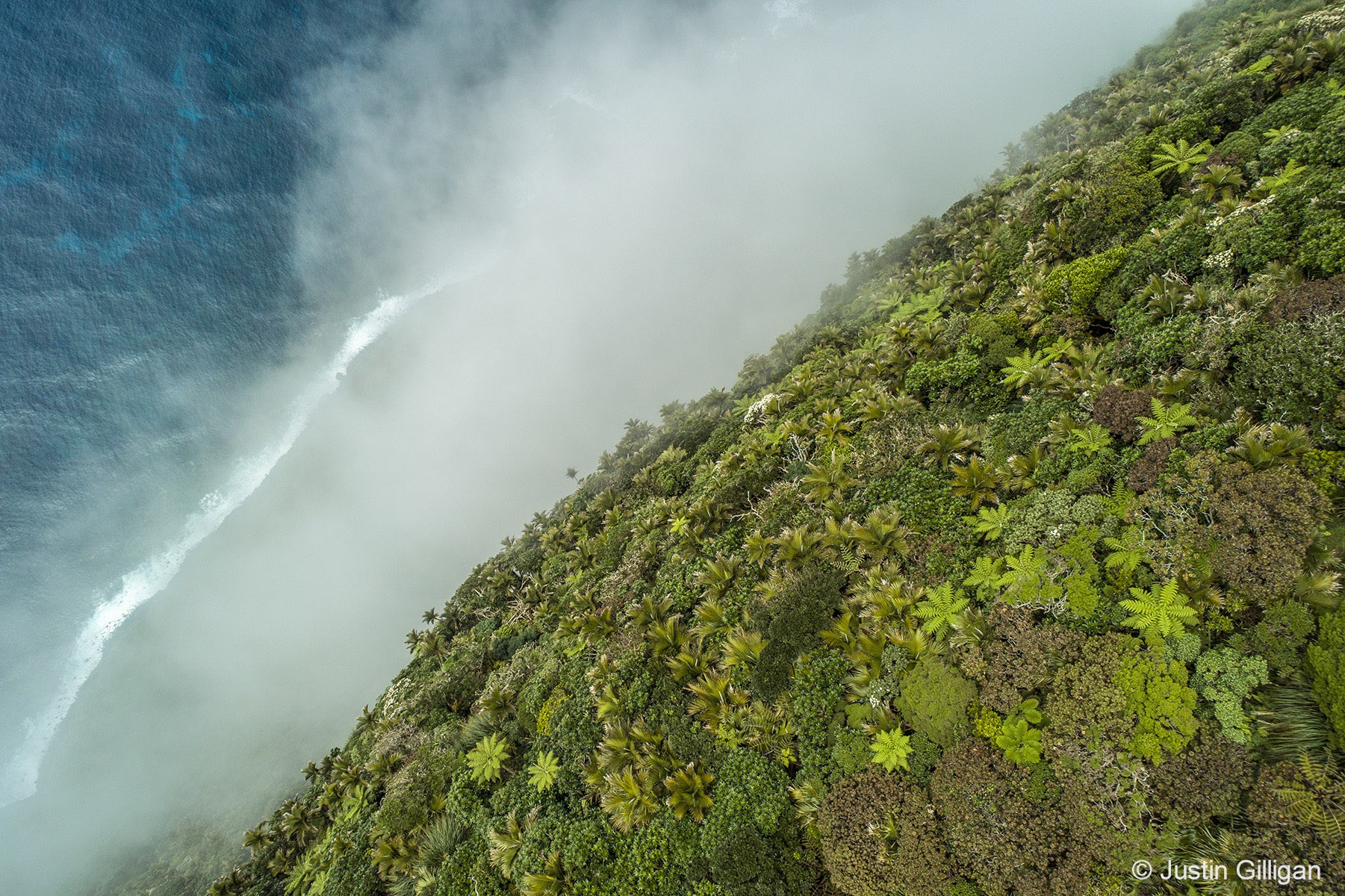
Gnarled Mossy Cloud Forest
Justin Gilligan, New South Wales
The plateau of Mount Gower (868m) is home to a critically-endangered ecological community known as the gnarled mossy cloud forest. This stunted forest is home to many endemic and endangered plants found nowhere else, bound by dramatic slopes that descend through the clouds into the sea below.
Lord Howe Island, New South Wales
DJI Phantom 4 Pro, 24mm, 1/240, f/4.5, ISO 100
Judges’ comments: The angles in this image appear to defy reality, with the impossibility of the scene provoking more questions than answers. The elemental force of the water against the dense and busy textures of the rainforest create an energy-infused and vertigo-inducing landscape, setting it apart from other submissions.
JUNIOR
Winner
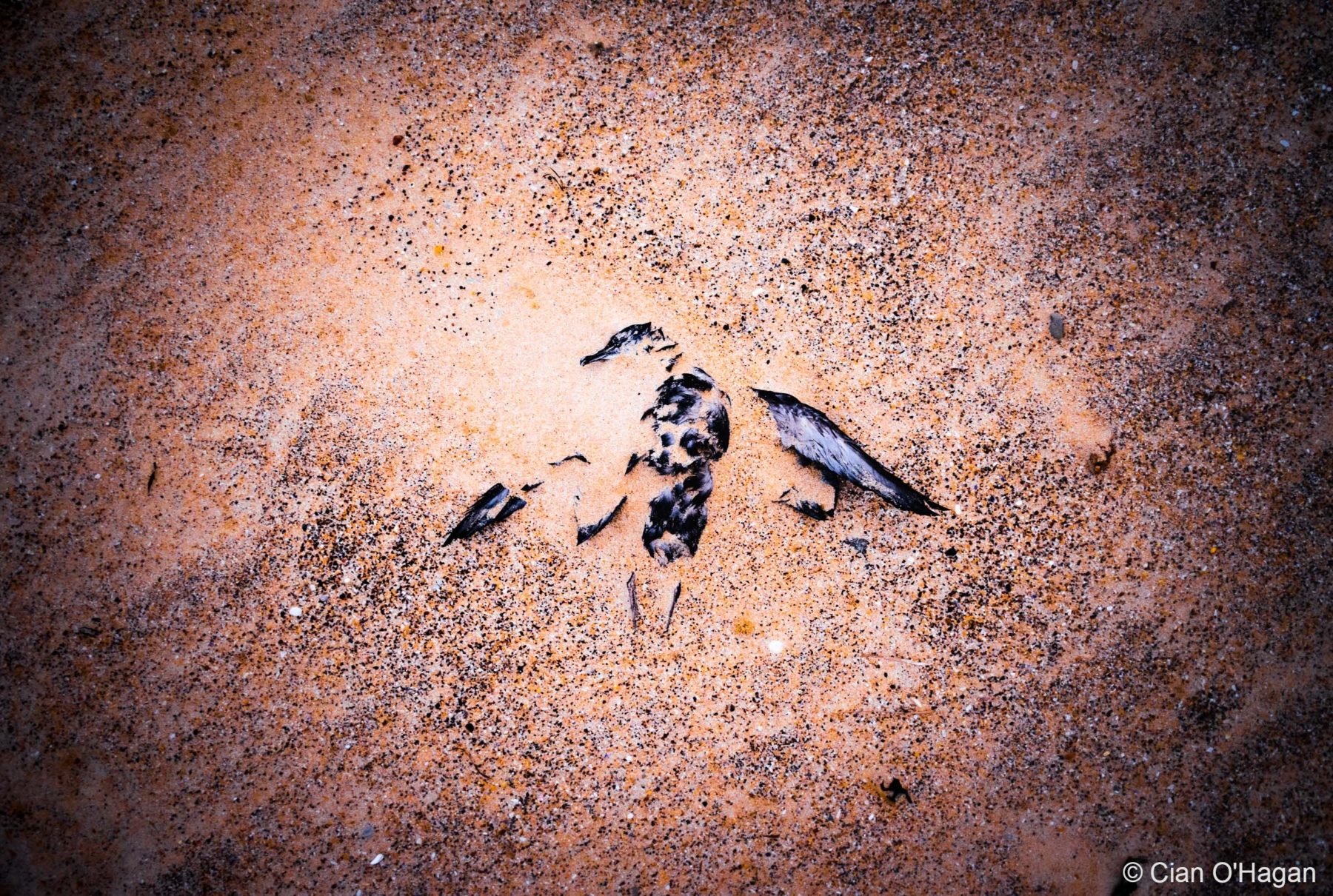
Impermanence
Cian O’Hagan, New South Wales – 16 years old
My image ‘Impermanence’ was captured at my local beach after harsh winds had uncovered numerous objects beneath the surface. It depicts a decaying seabird stretched out amongst the sand and is indicative of the dangerous and unstable nature of life amongst the coastal elements.
Dudley Beach, New South Wales
Nikon D3500, AF-P 18–55mm VR, 1/160, f/4.0, ISO 800, handheld
Judges’ comments: This simple photograph is contemporary in its execution. The photographer’s hand is strong – stark lighting and a severe palette reflect the sometimes harsh reality of nature.
Runner-up
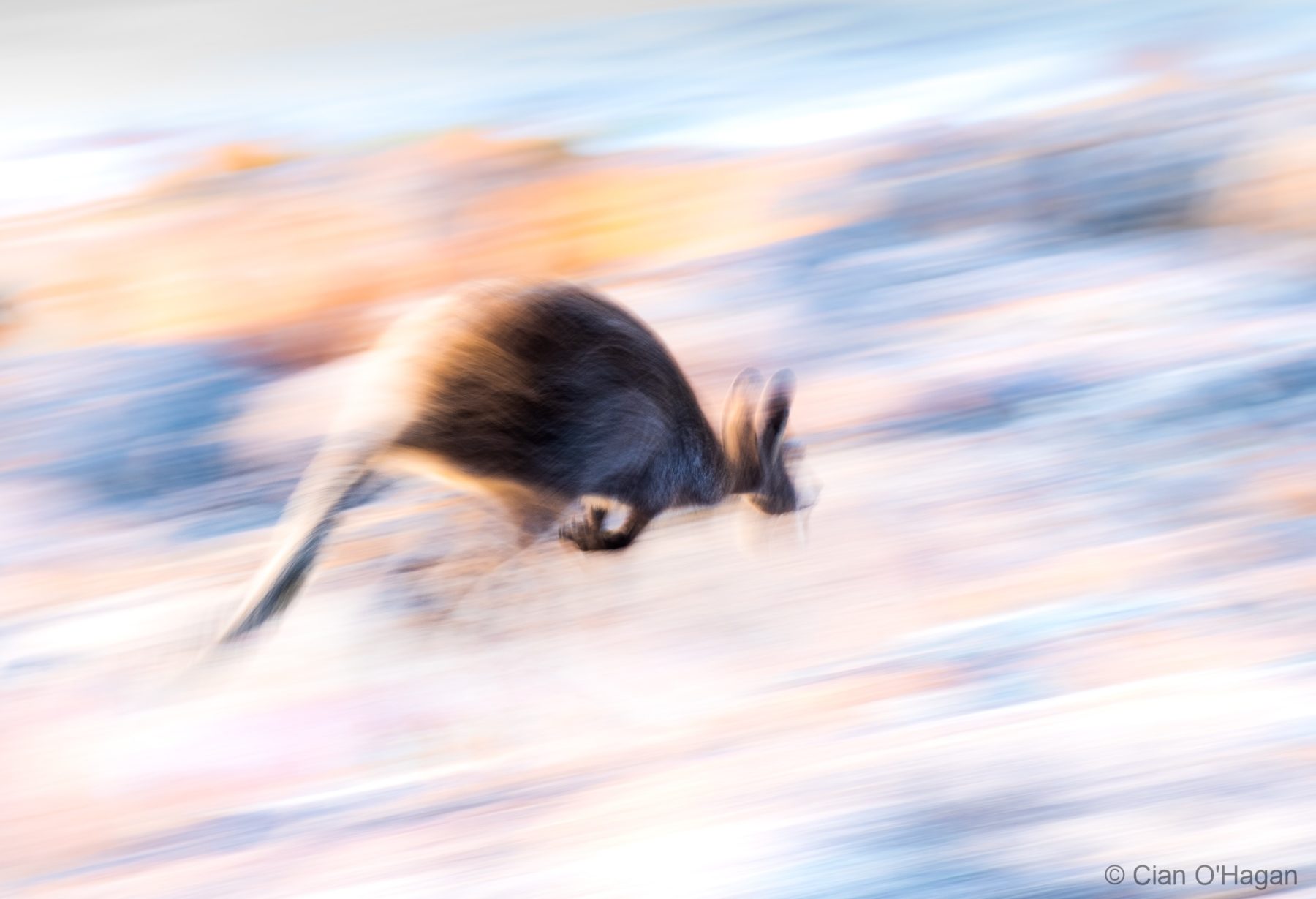
Abstraction of an Icon
Cian O’Hagan, New South Wales – 16 years old
Forester kangaroo (Macropus giganteus tasmaniensis)
My image ‘Abstraction of an Icon’ is an expressive depiction of a kangaroo spotted whilst climbing along the rocks at Friendly Beaches, Tasmania. I used a slow shutter speed to obscure the form and to capture the power, grace and speed of this national symbol.
Friendly Beaches, Tasmania
Fujifilm XT3, XF 18–55mm, 1/8, f/7.1, ISO 160, tripod
Judges’ comments: Artistic and engaging, the photographer has captured harsh velocity but with a soft, gentle palette.
LANDSCAPE
Winner
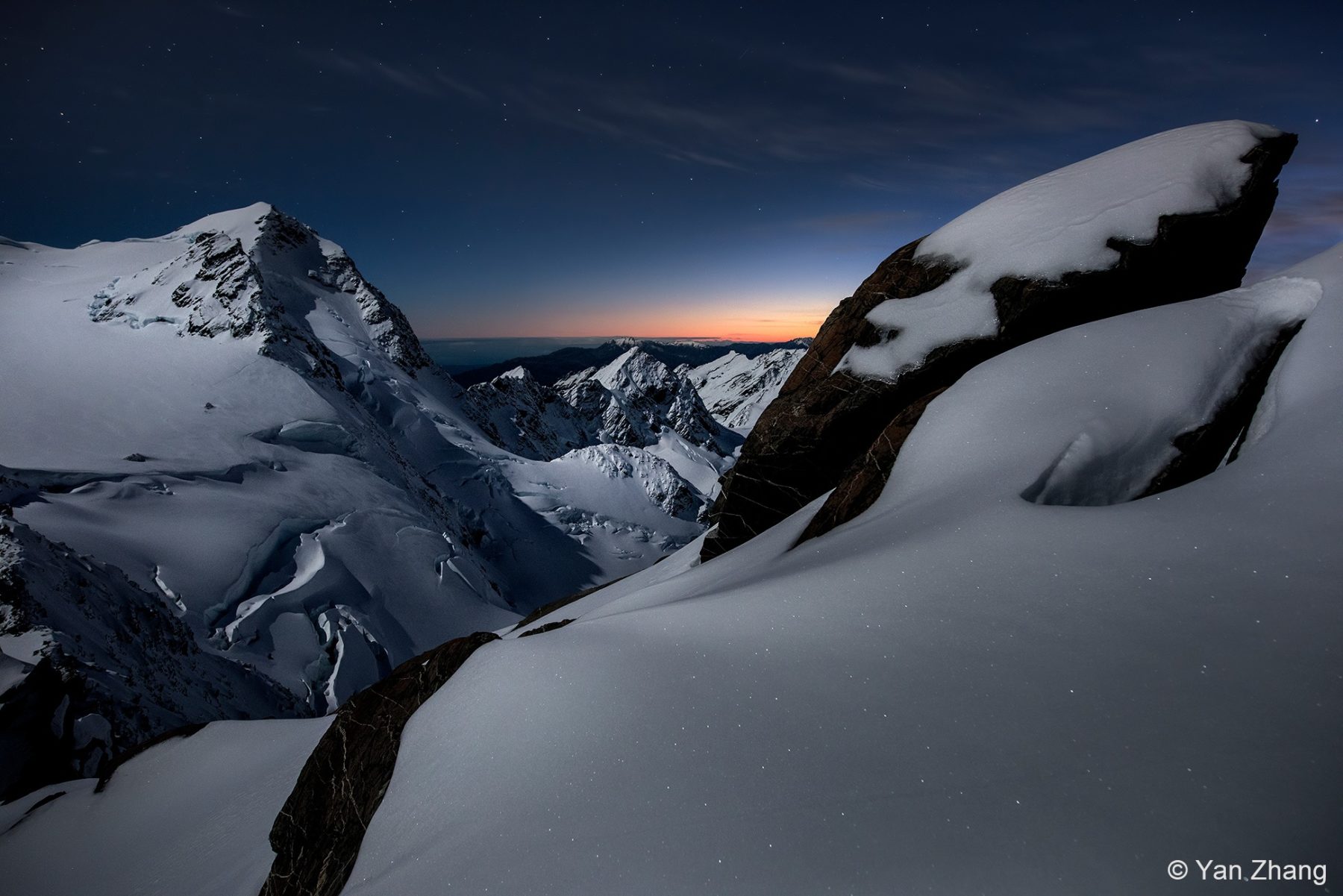
Breaking Dawn
Yan Zhang, New South Wales
The eastern horizon has already started to glow, but the reflections of stars linger on the snow of the Tasman Glacier, still visible thanks to the lingering moonlight. This image was a product of my four-day expedition to the Tasman Glacier, where I climbed to the top of Hochstetter Dome (2834m).
Tasman Glacier, New Zealand
Nikon D810, 14–24mm f/2.8, 10, f/5.6, ISO 1600, Berno C2980 tripod
Judges’ comments: There is a magical sparkle in this technically excellent image. The bright stars are echoed in the glittering snow, and the landscape offers a natural arabesque that walks our eye through the valley.
Runner-up
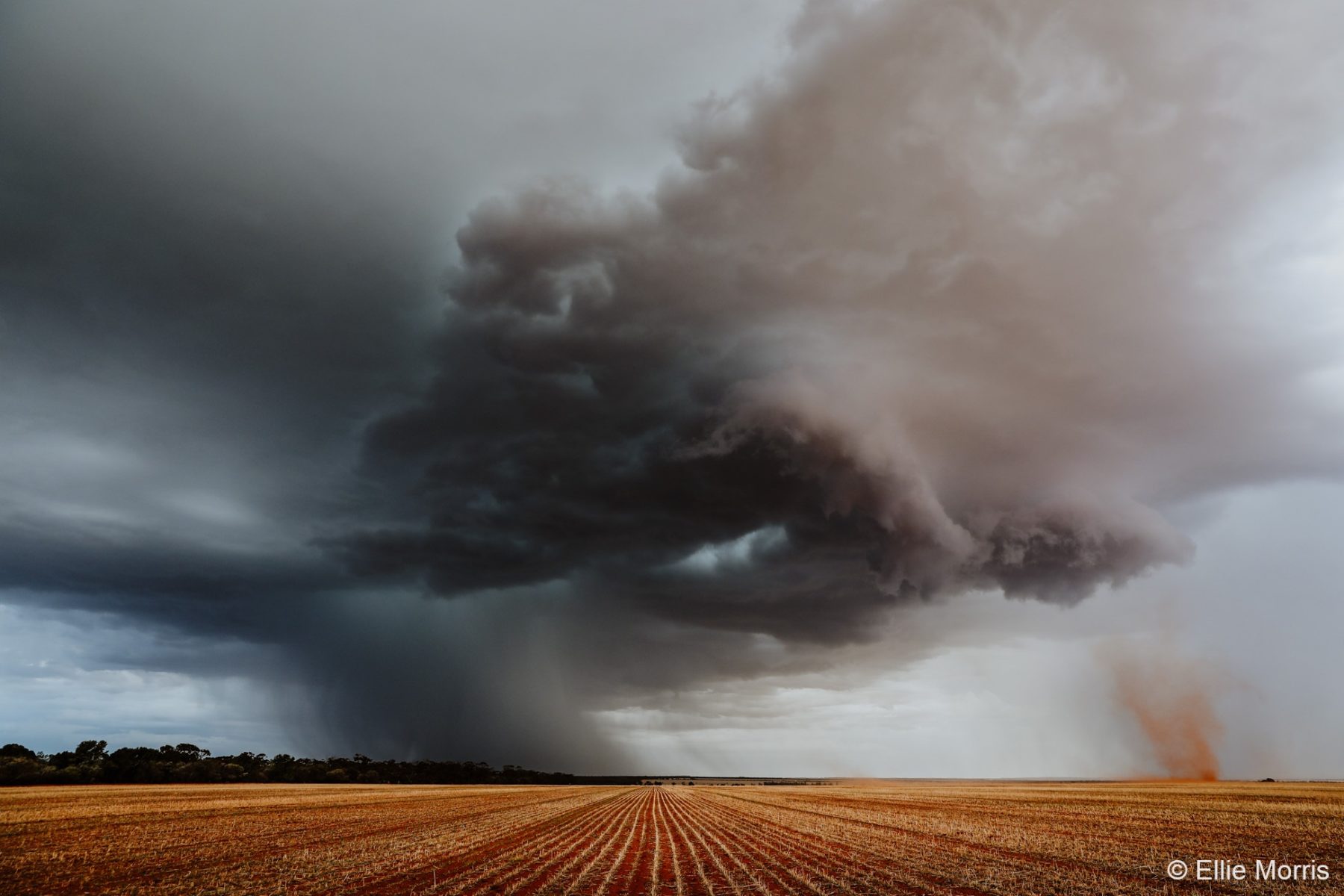
Forces of Nature
Ellie Morris, Western Australia
A stormy afternoon at the start of autumn in WA’s wheatbelt watching dark clouds moving across the land, dropping rain as they went. As the wind picked up, clouds of dust were created ahead of the rain and hail that followed.
Perenjori, Western Australia
Canon EOS 5D Mk IV, Canon EF 24–70mm f/2.8L II USM, 1/125, f/5, ISO 400, tripod
Judges’ comments: The tension between the formality of the recently harvested field and the crazy weather system elevated this picture. The viewer doesn’t know where to look first, as the rare capture of a dust devil operates separately from, yet seen in the same frame as, a rain bomb.
THREATENED SPECIES
Winner
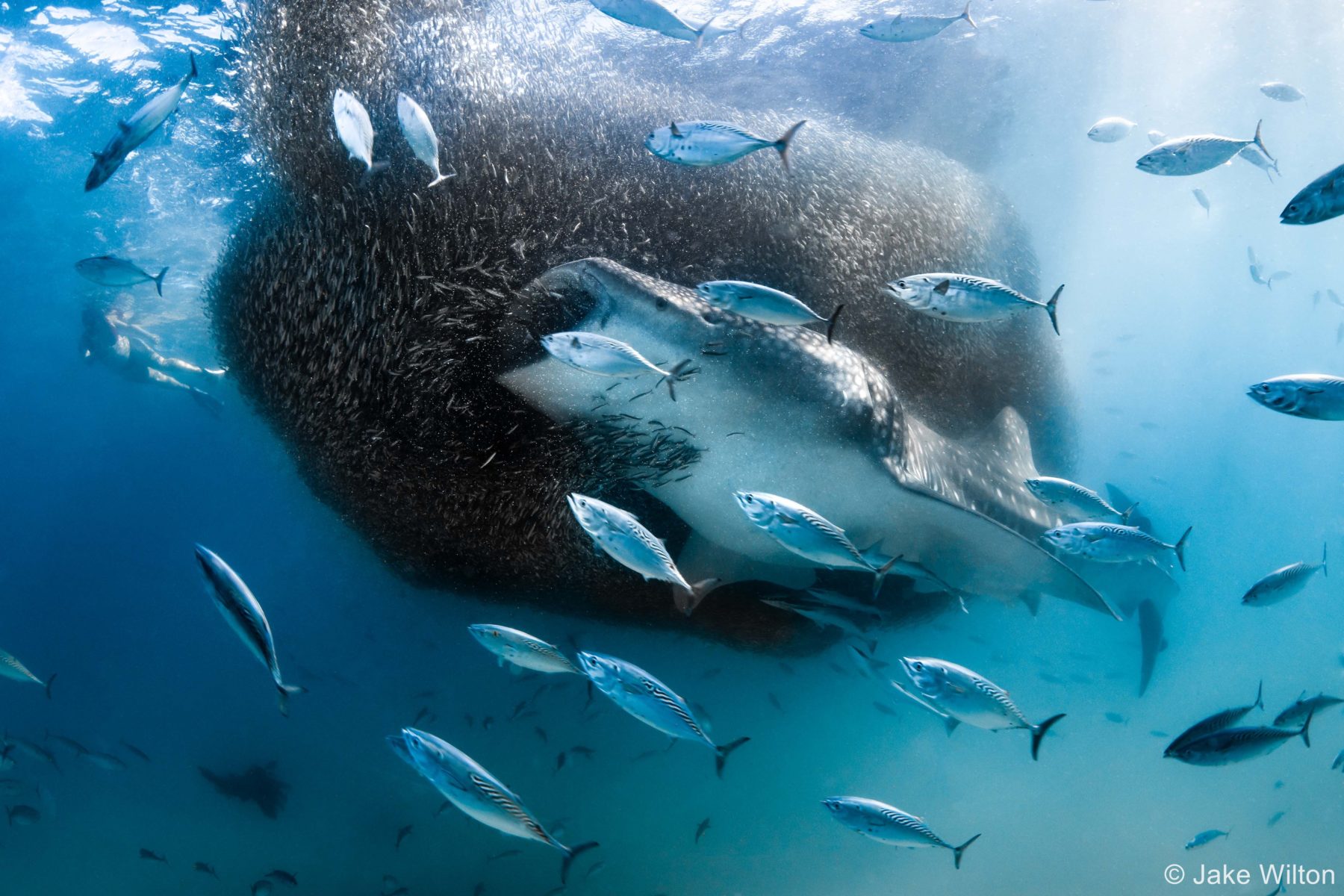
Ocean Giant
Jake Wilton, New South Wales
Whale shark (Rhincodon typus)
Status: Endangered
A whale shark engulfs a bait ball of fish on the Ningaloo Reef. Little is known about this behaviour, as it is so rare only a handful of records exist. The sharks are too slow, so must rely on the efforts of other predators such as tuna to catch them.
Coral Bay, Western Australia
Nikon D810, Sigma 15mm fisheye, 1/400, f/9, ISO 400, free diving at 10m depth, single breath
Judges’ comments: This photograph skilfully documents the dynamic between the bait ball and the whale shark, capturing this natural feeding behaviour with amazing light on the bait ball.
Runner-up
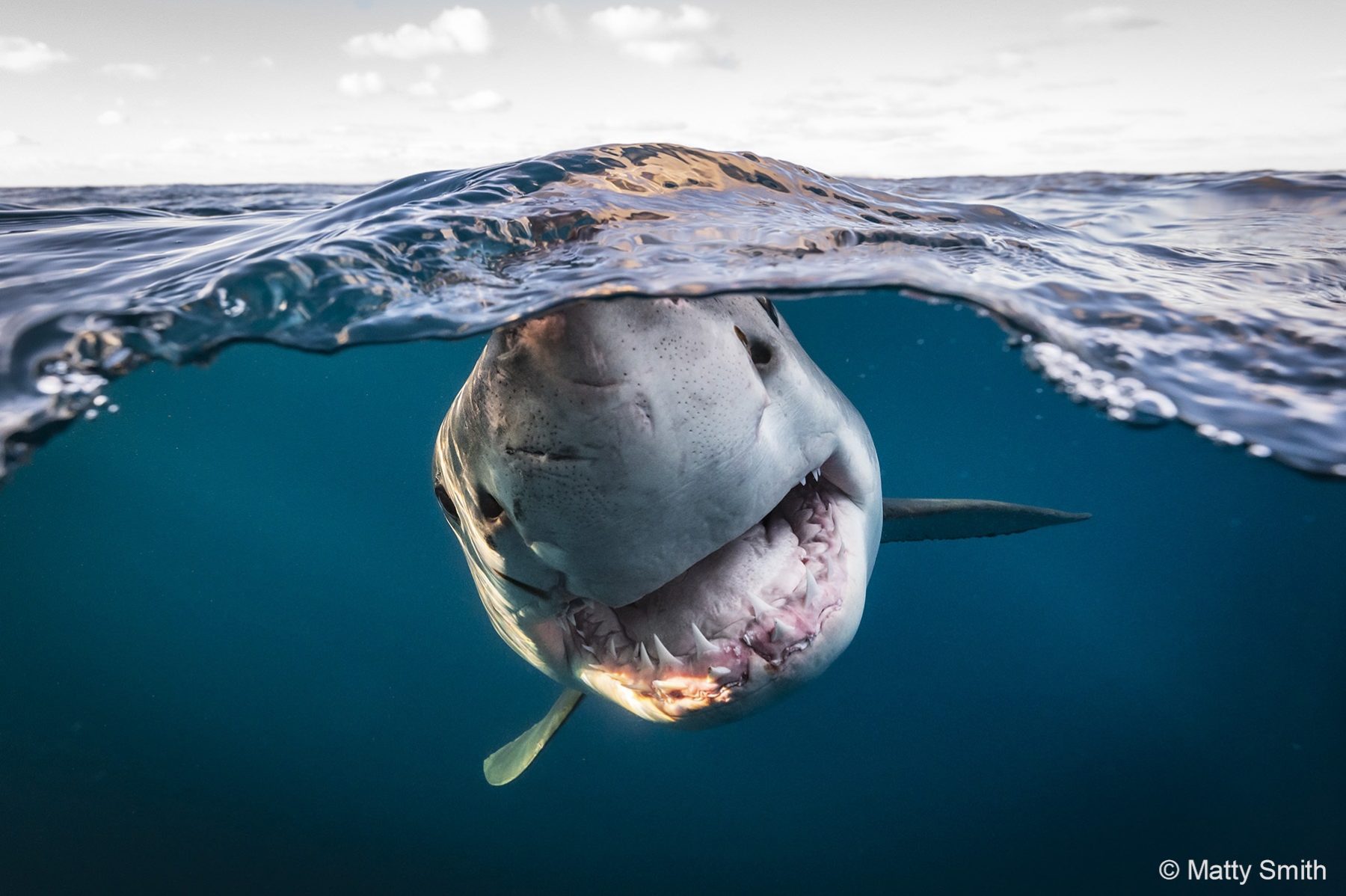
Head On
Matty Smith, New South Wales
Great white shark (Carcharodon carcharias)
Status: Vulnerable
To make this charismatic great white shot I needed a shark that showed non-aggressive behaviour to avoid risk to us both. I had initially used a fine mix of tuna oil and flake to lay a scent trail to attract the shark (licenced) but the shark was never actually fed.
South Neptune Islands, South Australia
Judges’ comments: A highly engaging portrait of a largely misunderstood animal. It is a terrific demonstration of the over-under technique, with excellent light on the shark and the water’s surface. Surprisingly, even though the jaw is agape, this image doesn’t evoke the terror some people may feel for this animal.
MONOCHROME
Winner
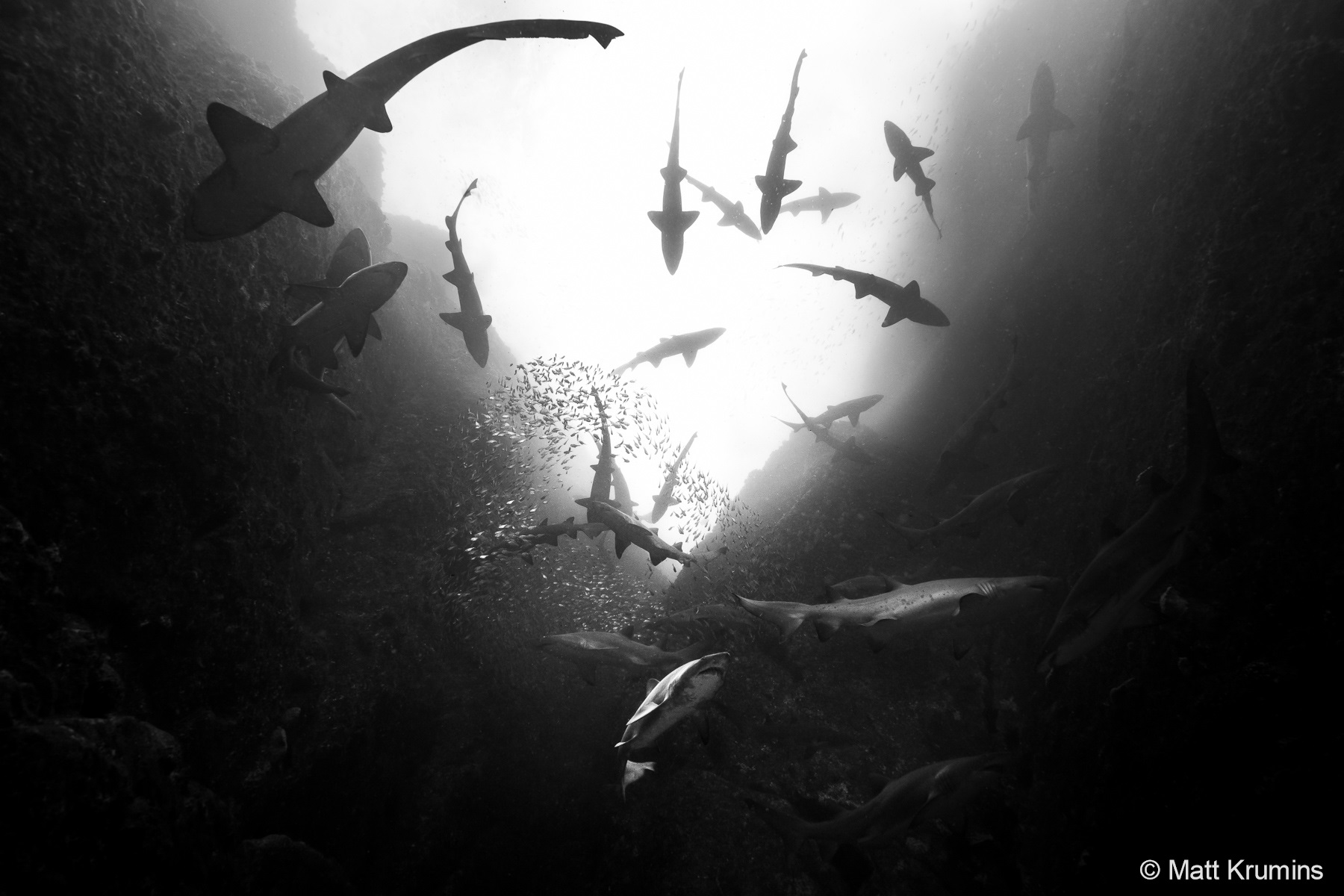
Fish Rock Cave
Matt Krumins, Victoria
Grey nurse shark (Carcharias taurus)
A school of critically endangered grey nurse sharks hover almost motionless in front of the 24m-deep entrance to Fish Rock Cave. It’s such a privilege to see this number of sharks in one place, and whilst ominous in appearance, these incredible animals are generally considered harmless unless provoked.
Fish Rock Cave, South West Rocks, New South Wales
Nikon D850, 16–35mm f/4, 1/200, f/8, ISO 320, 2 x Sea&Sea YS-D1 flash, handheld, Nauticam underwater housing
Judges’ comments: Clever compositional layering draws the viewer into the depths of this graceful image. The seeming chaos of this aggregation intensifies as the eye lingers and even more sharks become apparent. It is captivating and holds the eye.
Runner-up
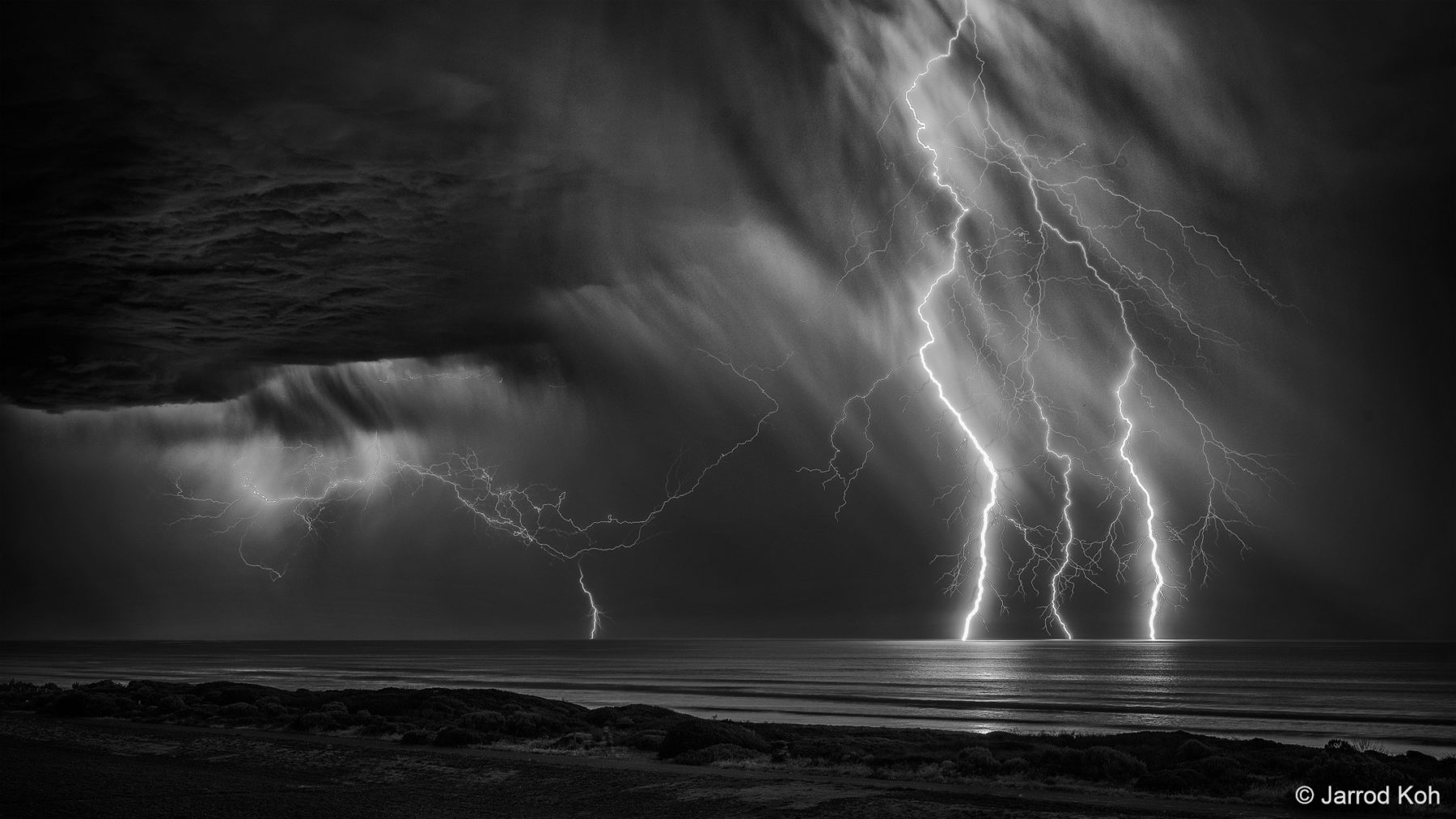
Crackle and Pop
Jarrod Koh, South Australia
A storm passed in front of our house. I have never been so close to lightning strikes. The thunder rolled like undulating galvanised steel sheets. This is a single frame capturing the ferocity of the downpour and the energy released from the lightning strikes.
Middleton, South Australia
Nikon D810A, Sigma Art 50mm f1.4, 30 seconds, f/8, ISO 200, tripod
Judges’ comments: Excellently composed, captured and processed, the dramatic weather in this scene partners with an unexpected serenity evoked by the surrounding softness. The monochrome format has been used well to clarify the complexity of the scene.
URBAN ANIMALS
Winner
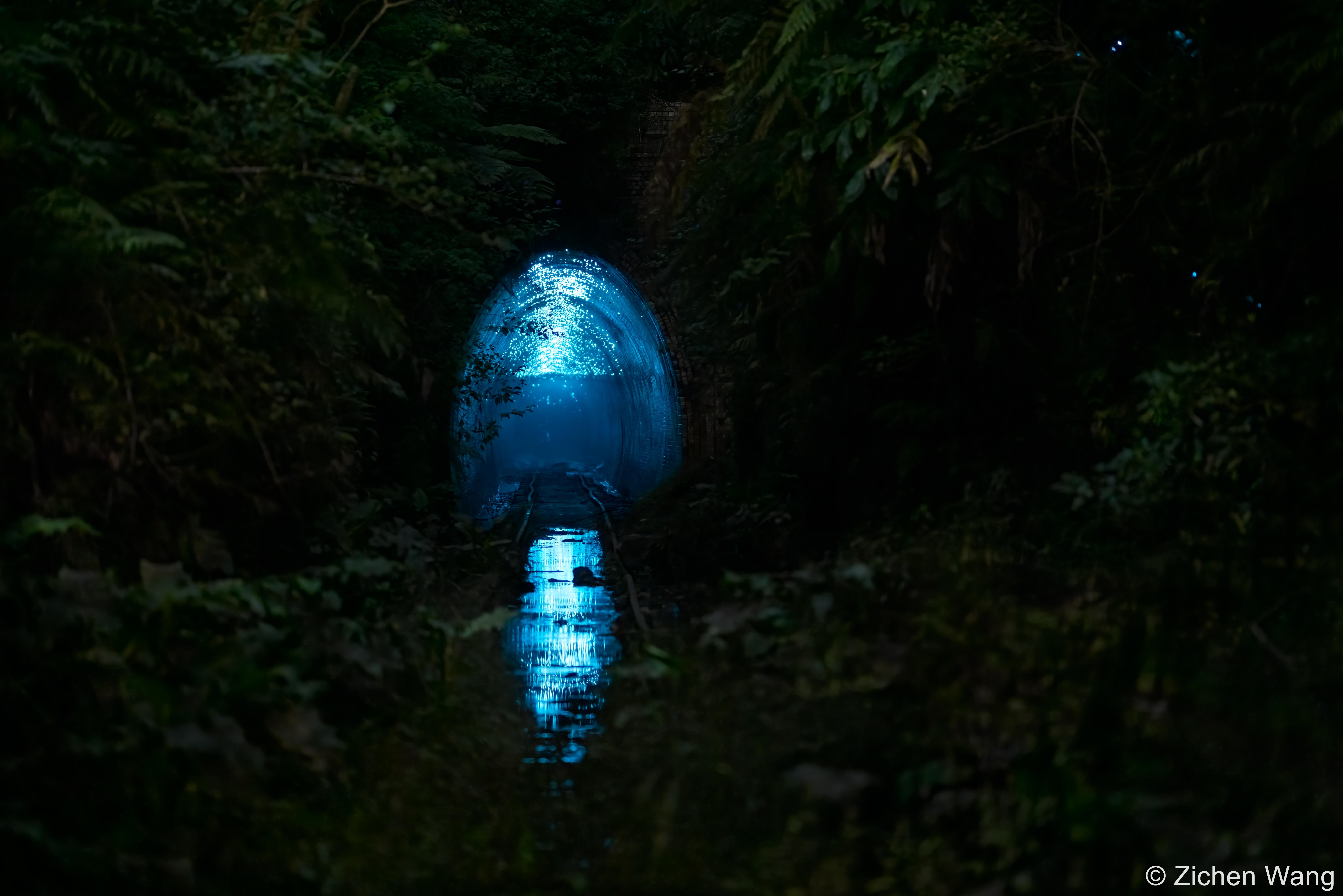
The Tunnel of Eerie Blue Light
Zichen Wang, New South Wales
Australian glow-worm (Arachnocampa richardsae)
The abandoned tunnel is illuminated by thousands of glow-worms (Arachnocampa richardsae). Glow-worms typically live in damp sandstone crevices, but this tunnel is home to a particularly large population. The site is closed to the public, so I took this photo through an iron gate, standing in a puddle of mud.
Helensburgh Glow Worm Tunnel, Helensburgh, New South Wales
Sony α7R II, Sigma 85mm f1.4 Art, 12 mins, f/1.4, ISO 800, Sirui W-2204 waterproof tripod, image processed using three shots at four minutes/shot to capture shadow detail and one shot at one minute to recover highlight detail, noise reduction applied using Topaz Denoise AI and Adobe Photoshop
Judges’ comments: Eye-catching and mysterious, the viewer is drawn to the wildlife inhabiting the tunnel. The photographer has documented animals that might not immediately be considered as wildlife or easily seen with the naked eye.
Runner-up
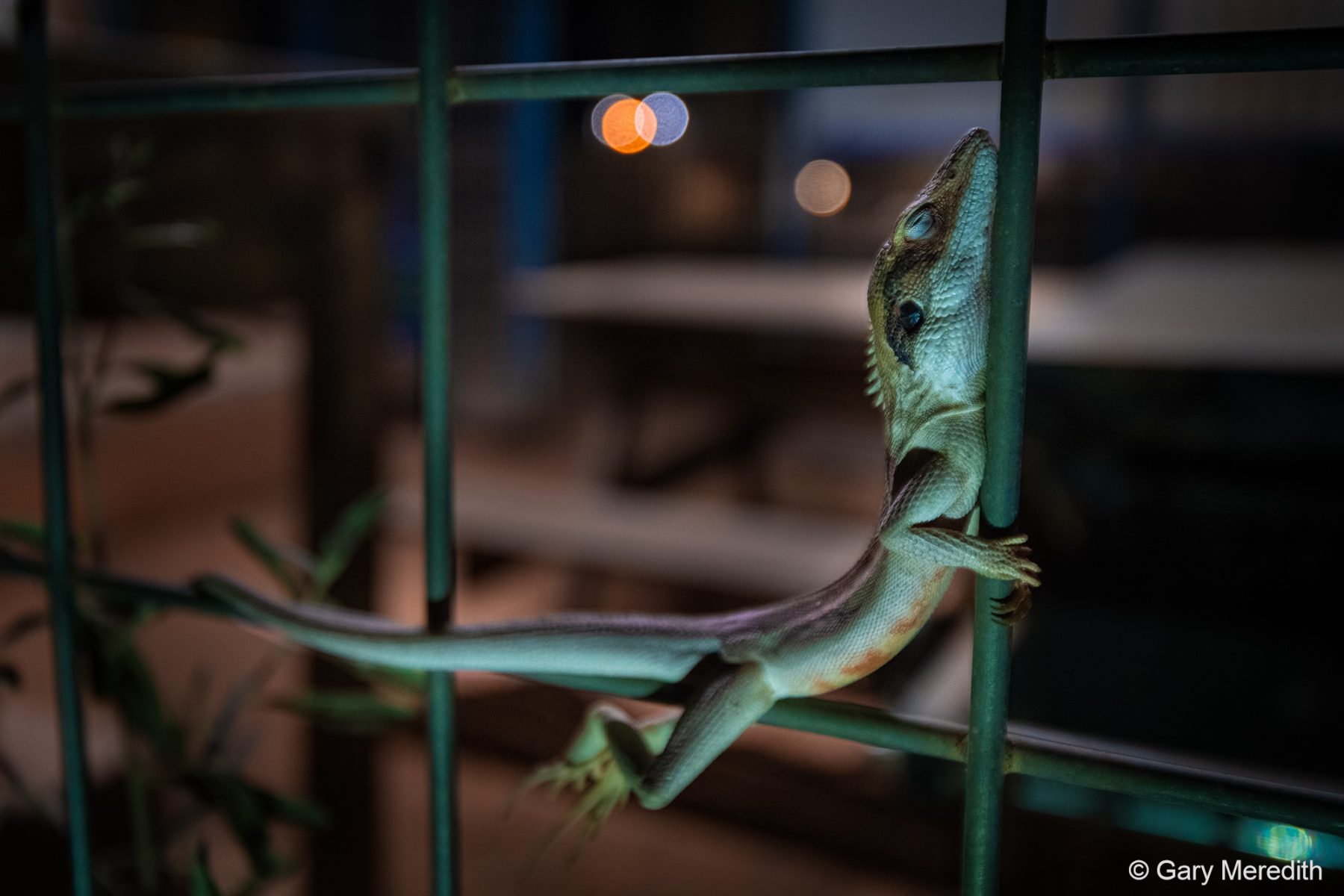
Sleeping Dragon
Gary Meredith, Western Australia
Long-nosed dragon (Gowidon longirostris)
A long-nosed dragon sleeps on wire mesh outside a building at a remote gold mining operation in the Great Sandy Desert. This lizard may have positioned itself in such a way that the insects attracted to the light above may be an easy meal at sunrise the next day.
Telfer, Western Australia
Nikon D850, Nikkor 16–35mm f/4, 1/60, f/4, ISO 1250, Nikon SB-700 with soft box, Godox remote flash trigger, handheld
Judges’ comments: This image feels like a scene out of a Hollywood film with its cinematic lighting, colour palette, expert use of leading lines and depth of field.
OUR IMPACT
Winner
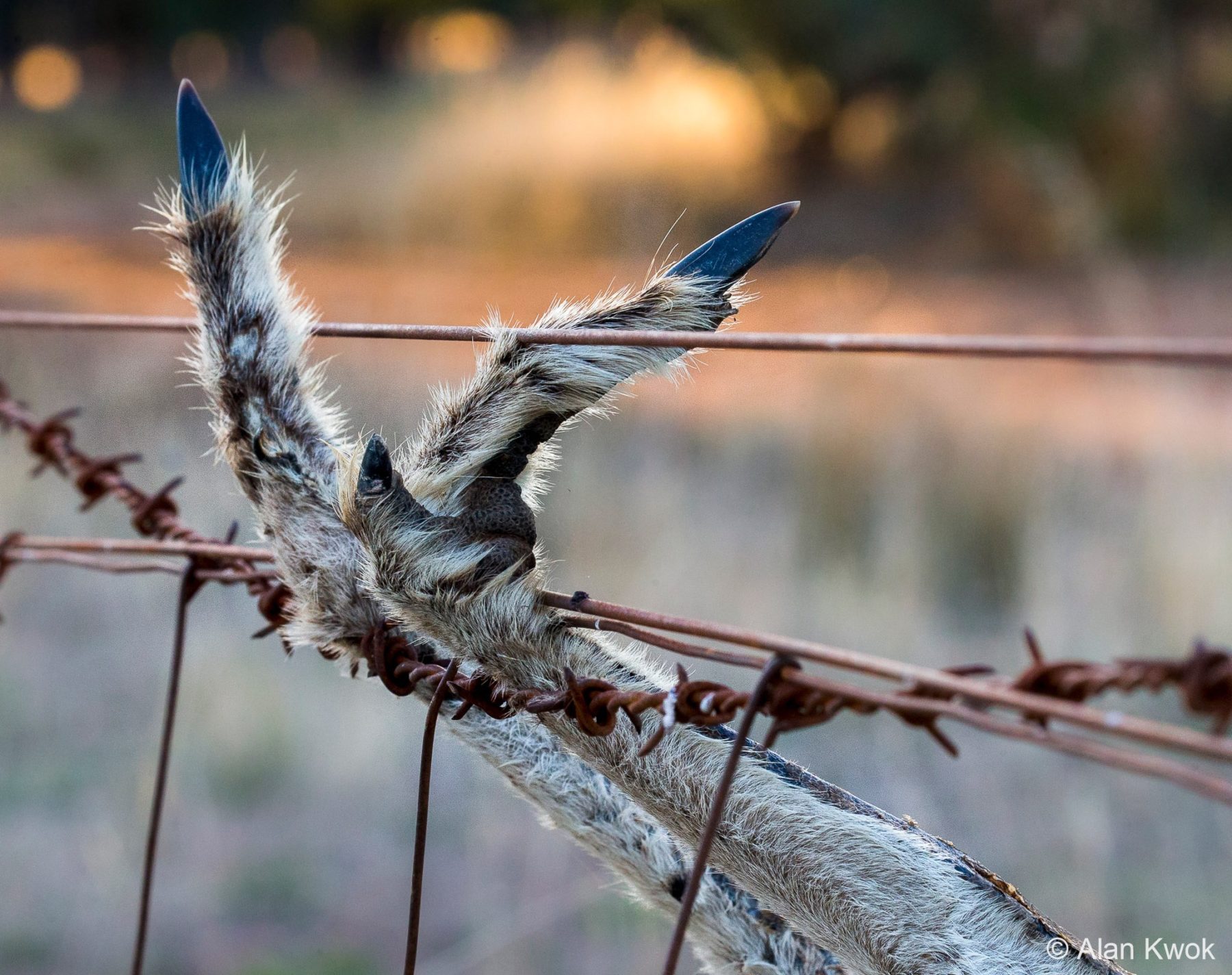
Snagged
Alan Kwok, New South Wales
While trying to jump fences, kangaroos sometimes get their feet snagged on the wire. Their upper body flips toward the ground, tangling their legs in the wires. Known as ‘fence hanging’, the individual has no way of getting up or freeing itself and usually dies, unless a human can free it.
Darlington Point, New South Wales
Canon 1DX, Canon 100–400mm f/4–5.6L Mk II, 1/200, f/14, IS0 2500
Judges’ comments: A brutal photograph, cleverly captured with shallow depth of field and framing to tell an important story about animal welfare. Using a soft light and colours, the photographer has crafted an image that is captivating enough to stop us turning away from the horrible event that is shown.
Runner-up

Landing On Mars
Jiayuan Liang, South Australia
This photo of Broken Hill Mine was taken during my journey to document Australia’s historical mines. The Miners Memorial building on the top of the mine looks like a spaceship landing on Mars. It shows how landscape was changed by mining activities.
Broken Hill Mine, Broken Hill, New South Wales
Sony ILCE-7RM4, Sony FE 16–35mm f/2.8, 13, f/4, ISO 1600, tripod
Judges’ comments: The beauty of a ravaged landscape has been captured here. The buildings allow us to appreciate the relative scale of the mine, and we are challenged by the photographer’s ability to see the blight of the mine so handsomely.
PORTFOLIO
Winner
Alejandro Trevino, New South Wales
Judges’ comments: An expertly sequenced portfolio unified by a consistent colour palette and subject. The use of light across the work establishes a sense of place, and viewers will be surprised to see such diversity in the water off Australia’s most populous city.
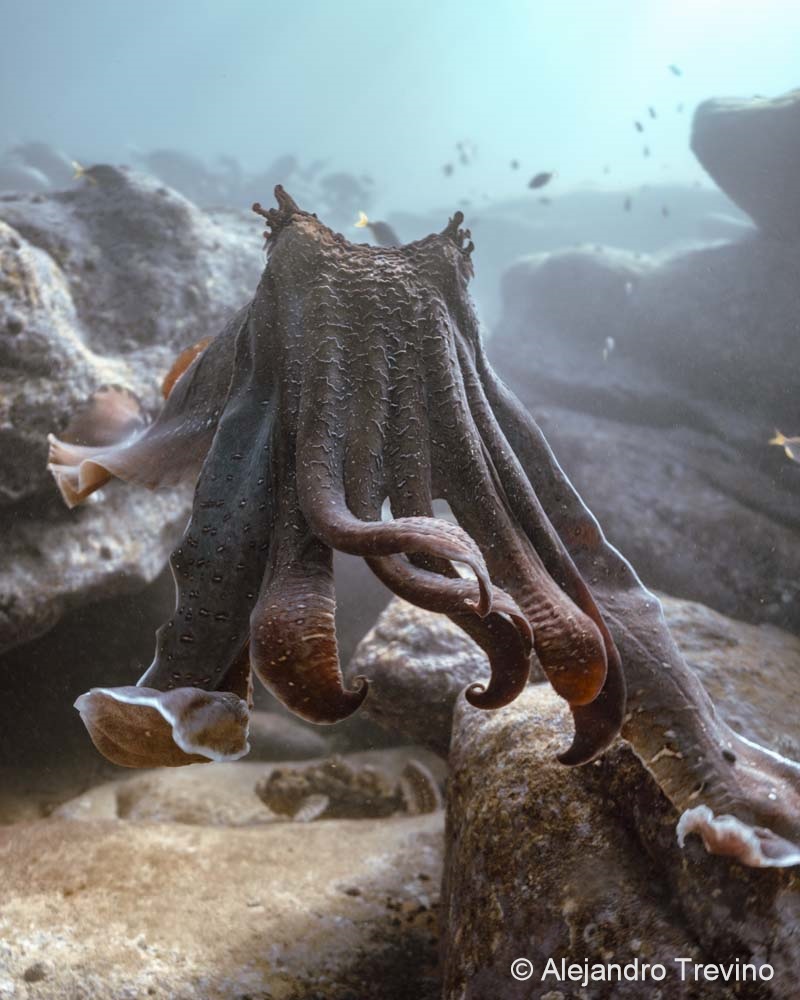
Breeding Behaviour
Alejandro Trevino, New South Wales
Giant cuttlefish (Sepia apama)
Giant cuttlefish bodies are streamlined, making them efficient at swimming. On certain occasions such as their annual spawning aggregation, the males engage in a fierce mating competition. At this time they display elaborate colours and patterns and enlarge their bodies to attract a mating partner.
Sydney, New South Wales
Sony A7 III, Sony FE 28–70mm f3.5–5.6 OSS, 1/80, f/3.5, ISO 100, handheld while freediving, Seafrogs underwater housing with 6″ dome port

Giant Cuttlefish and the Winter Garden
Alejandro Trevino, New South Wales
Giant cuttlefish (Sepia apama)
Giant cuttlefish are often seen and approached by swimmers and divers along the southern coast of Australia in late winter. This is the largest of all cuttlefish species, and despite being colourblind, they are masters of camouflage with the ability to change their size, shape, colour and even texture of their bodies.
Sydney, New South Wales
Sony A7 III, Sony FE 28–70mm f3.5–5.6 OSS, 1/200, f/3.5, ISO 250, handheld while freediving, Seafrogs underwater housing with 6″ dome port
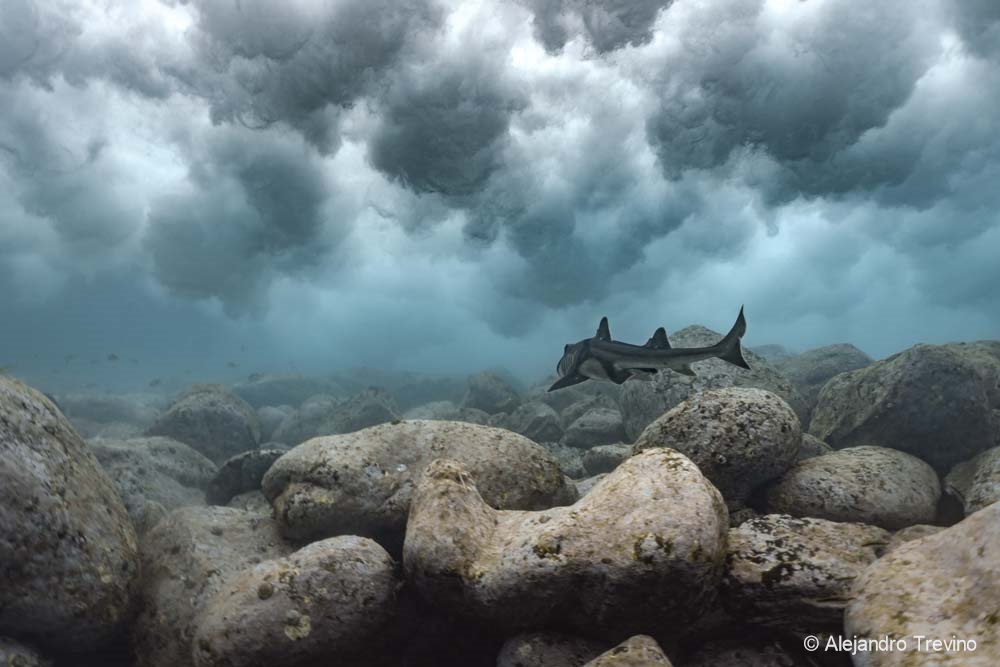
Marine Tempest
Alejandro Trevino, New South Wales
Port Jackson shark (Heterodontus portusjacksoni)
Over the breeding season (winter into spring), female Port Jackson sharks lay a pair of eggs every fortnight and place them in narrow gaps between the rocks for protection. Almost 90 per cent of laid eggs fall prey to other sharks, making the embryo-to-hatchling period the most dangerous time of their lives.
Sydney, New South Wales
Sony A7 III, Sony FE 28–70mm f3.5–5.6 OSS, 1/160, f/3.5, ISO 125, handheld while freediving, Seafrogs underwater housing with 6″ dome port
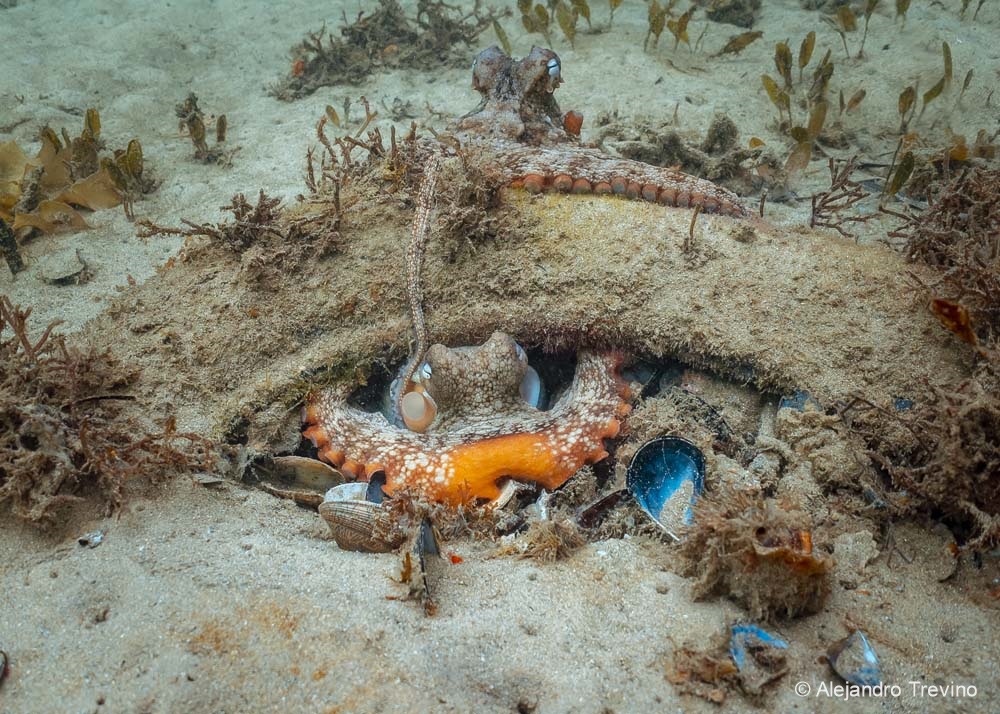
Mating Octopus
Alejandro Trevino, New South Wales
Common Sydney octopus (Octopus tetricus)
Common Sydney octopuses enter their reproductive cycle in September. This photo shows a female resting inside her den (sunken tyre) while a male approaches from above with his hectocotylus reaching the female’s mantle cavity for mating. Females often cannibalise their mating partners and this male remained at a safe distance.
Sydney, New South Wales
Sony A7 III, Sony FE 28–70mm f3.5–5.6 OSS, 1/160, f/6.3, ISO 800, handheld while freediving, Seafrogs underwater housing with 6″ dome port
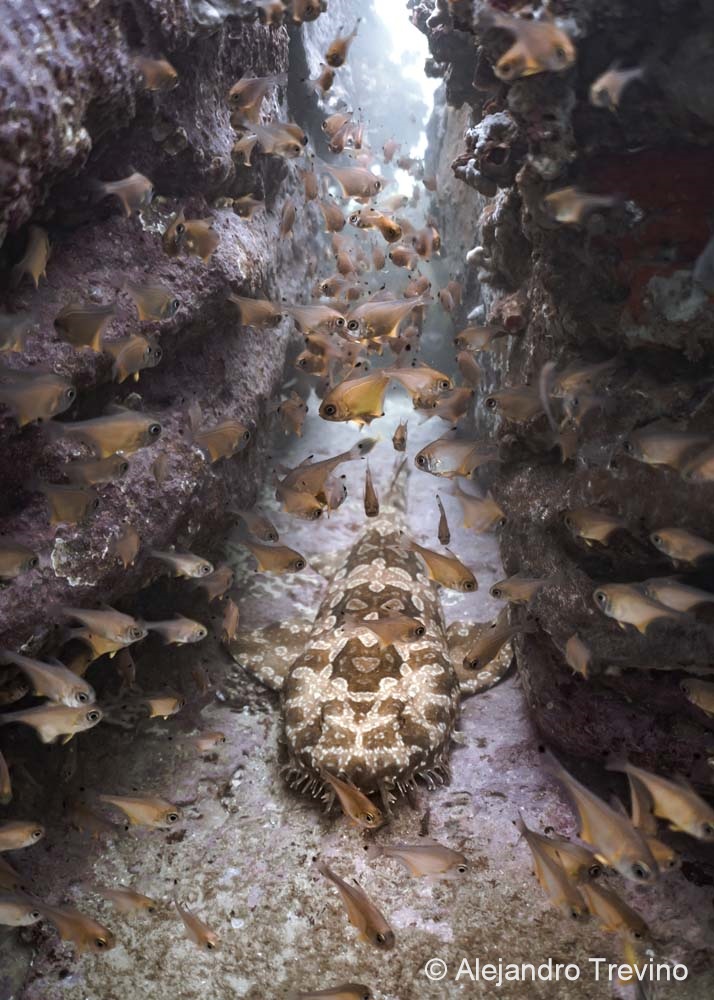
Shark Passage
Alejandro Trevino, New South Wales
Spotted wobbegong (Orectolobus maculatus)
Spotted wobbegongs are another common carpet shark species found in Sydney. They are safely approached by divers every day. Their skin pattern provides a unique camouflage which blends with surrounding rocks and seabed where most of their time is spent. Wabigang and dhabigang are words from the Dharug and Tharawal Aboriginal language groups, meaning ‘shaggy beard’.
Sydney, New South Wales
Sony A7 III, Sony FE 28–70mm f3.5–5.6 OSS, 1/160, f/3.5, ISO 800, handheld while freediving, Seafrogs underwater housing with 6″ dome port

The Secret Cave
Alejandro Trevino, New South Wales
Port Jackson shark (Heterodontus portusjacksoni)
From winter into spring, Port Jackson sharks arrive at the temperate waters of Cabbage Tree Bay. These sharks are active at night and rest on the rocky reef during the day. I had followed this shark into a narrow cavity where suddenly this spectacular shelter and grooming station appeared.
Sydney, New South Wales
Sony A7 III, Sony FE 28–70mm f3.5–5.6 OSS, 1/80, f/3.5, ISO 800, handheld while freediving, Seafrogs underwater housing with 6″ dome port
About the awards
The bioregion that encompasses Australia, New Zealand, Antarctica and New Guinea possesses a unique natural heritage, stretching back more than 80 million years to the break-up of the great southern continent of Gondwana.
The South Australian Museum and Australian Geographic focus on enhancing a general knowledge of this extraordinary legacy by encouraging photography of the region’s nature and landscapes, and promoting it in an annual competition to find the Australian Geographic Nature Photographer of the Year.
See the stunning Australian Geographic Nature Photographer of the Year exhibition at the South Australian Museum 27 Aug–30 Oct, and the Australian Museum in Sydney 17 Sept–11 Dec
We thank Museum Director Brian Oldman, Tim Gilchrist and all the staff of the South Australian Museum for their excellent and diligent stewardship of the Australian Geographic Nature Photographer of the Year, and extend our gratitude to ReAmped Energy and all the sponsors for their support.
The Australian Geographic Nature Photographer of the Year competition and exhibition is owned and produced by the South Australian Museum.
With thanks to our Presenting Partner ReAmped Energy.












